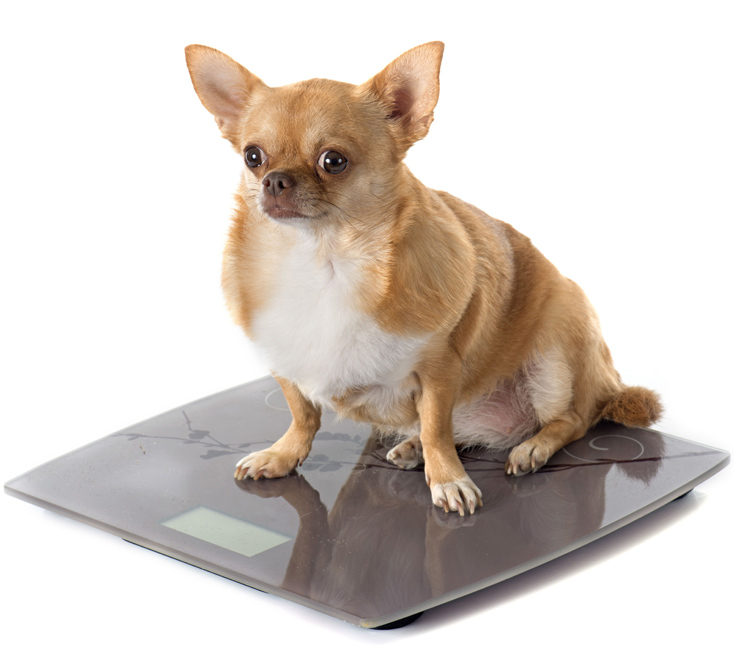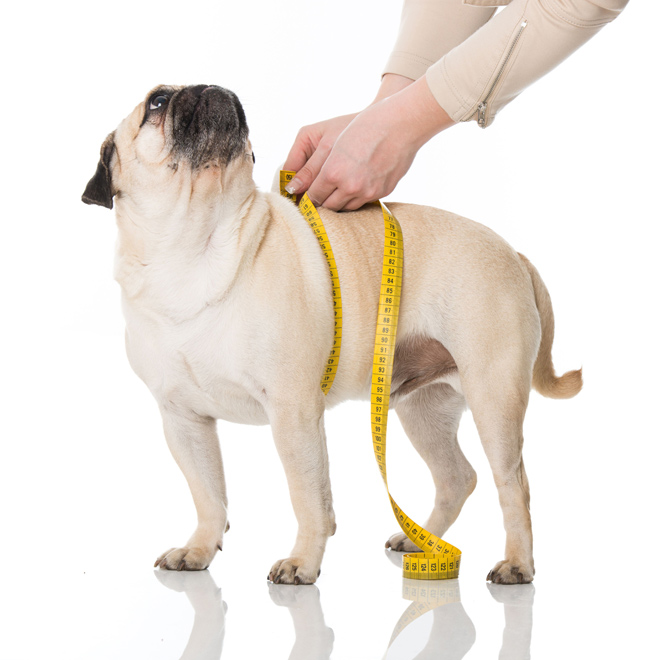Dietary & Weight
We hear about it all the time. That we, as humans, need to eat less and exercise more to maintain a healthy weight. We see articles in magazines and newspapers. We see stories on the news telling us about the expanding waistlines across the nation, and it is reaching epidemic proportions. Many of us have fought this battle, and may still fight it every day. But have you thought about your pet? Is your pet at a healthy weight?
 We weigh every pet that comes into Highland Pet Hospital, because your pet’s weight has a major impact on their overall health; just like us. According to the Association of Pet Obesity Prevention’s 2016 study, 54% of dogs and 59% of cats were either overweight or obese. The truth is that many of these pets (numbering in the millions) will die this year due to disease caused by obesity.
We weigh every pet that comes into Highland Pet Hospital, because your pet’s weight has a major impact on their overall health; just like us. According to the Association of Pet Obesity Prevention’s 2016 study, 54% of dogs and 59% of cats were either overweight or obese. The truth is that many of these pets (numbering in the millions) will die this year due to disease caused by obesity.
Consider this: an average Chihuahua weighing 10 pounds is the human equivalent of a 5′ 4” female weighing 237 pounds or an adult 5′ 9” male weighing 282 pounds.
Potential Problems from excess weight
The extra weight carried by your pet will ultimately lead to health problems and will reduce their life expectancy. Some of the problems that your pet may encounter:
• Diabetes
• Osteoarthritis
• Heart and Respiratory Disease
• High Blood Pressure
• Kidney Disease
• Many forms of Cancer
 How can I tell if my pet is overweight?
How can I tell if my pet is overweight?
As veterinarians, we check numerous parts of your pet’s body to identify whether your pet is at a healthy weight or not. You can use the same methods we do. First, using both hands, feel your pet’s ribcage. If you can feel their ribs easily, along with a thin layer of fat, it’s a good sign. Each rib should be distinct. If you can actually see your pet’s ribs, they are underweight. If you can not feel their ribs, or there is excess fat your pet is overweight. Also, check other bony areas of the body, such as the spine, base of the tail and shoulders. Just like the ribs, there should be a thin layer of fat covering these areas. If you can see these bony areas with your eyes, the pet is underweight. If you can’t feel them, the pet is overweight. Of course, use your eyes, too. Your pet should have a definitive waistline behind the ribcage. If the area between the ribcage and hips is as wide as, or wider than the ribcage, the pet is overweight.
Tips for helping my pet lose weight
Set reasonable goals and expectations. Your pet did not gain weight overnight, so it will take some time to lose the weight in a healthy way. Ideal weight loss for most pets is between 3-5% of their body weight per month until a healthy weight is achieved. So, a pet weighing 50 pounds should lose 1.5-2.5 pounds in the first month as an ideal goal.
You should know how many calories your pet is consuming each day- and understand if their caloric intake is appropriate for their size, age and breed. Some small breed household pets may require 300 calories or less, while active, large breeds need in excess of 1400. Ask your veterinarian how many calories your pet may need. We may suggest decreasing their food quantities to meet the caloric need, or perhaps suggest a different food with fewer calories. We offer a wide variety of different foods which can assist your pet in returning to a healthy weight.
Exercise your pet on a regular basis. Speak with your veterinarian about what limitations your pet may have. Walking your pet on a daily basis is a great start.


 Tap to Call Now
Tap to Call Now